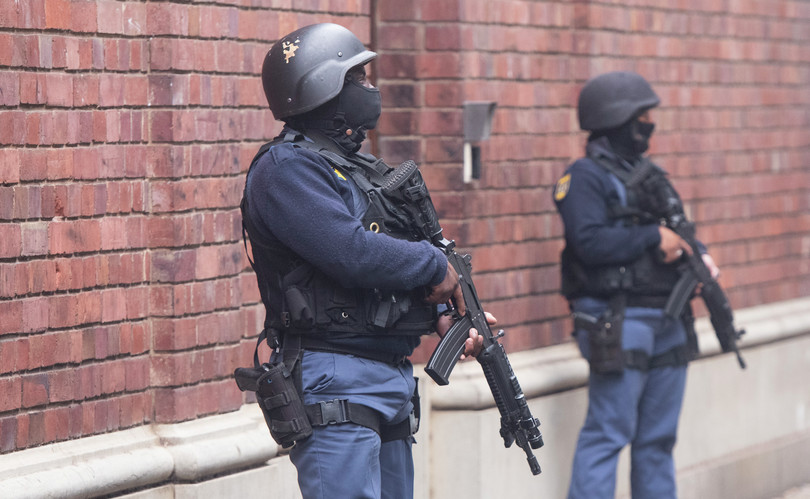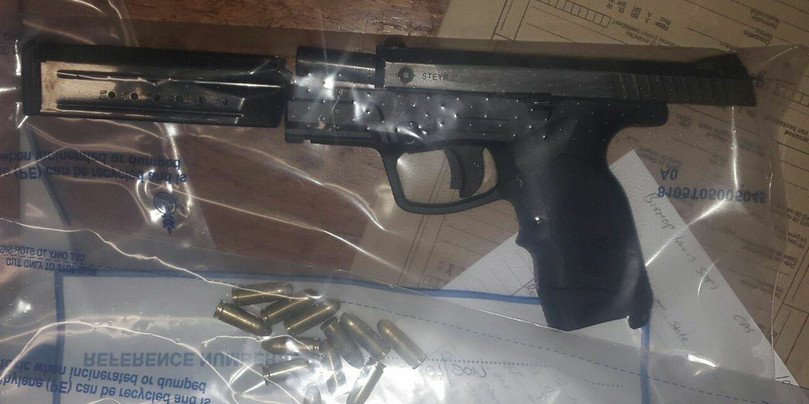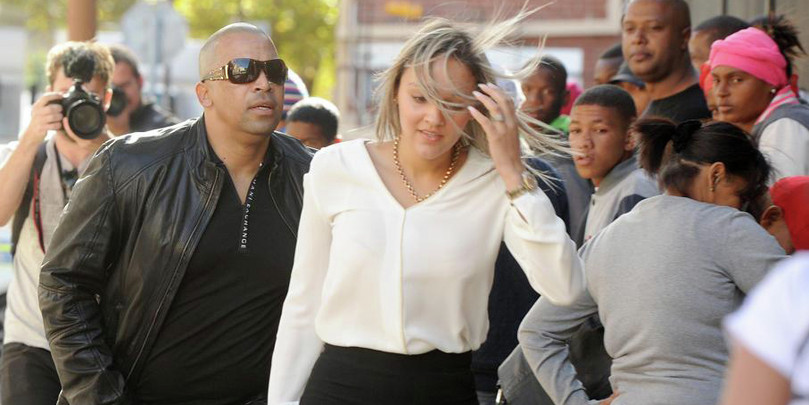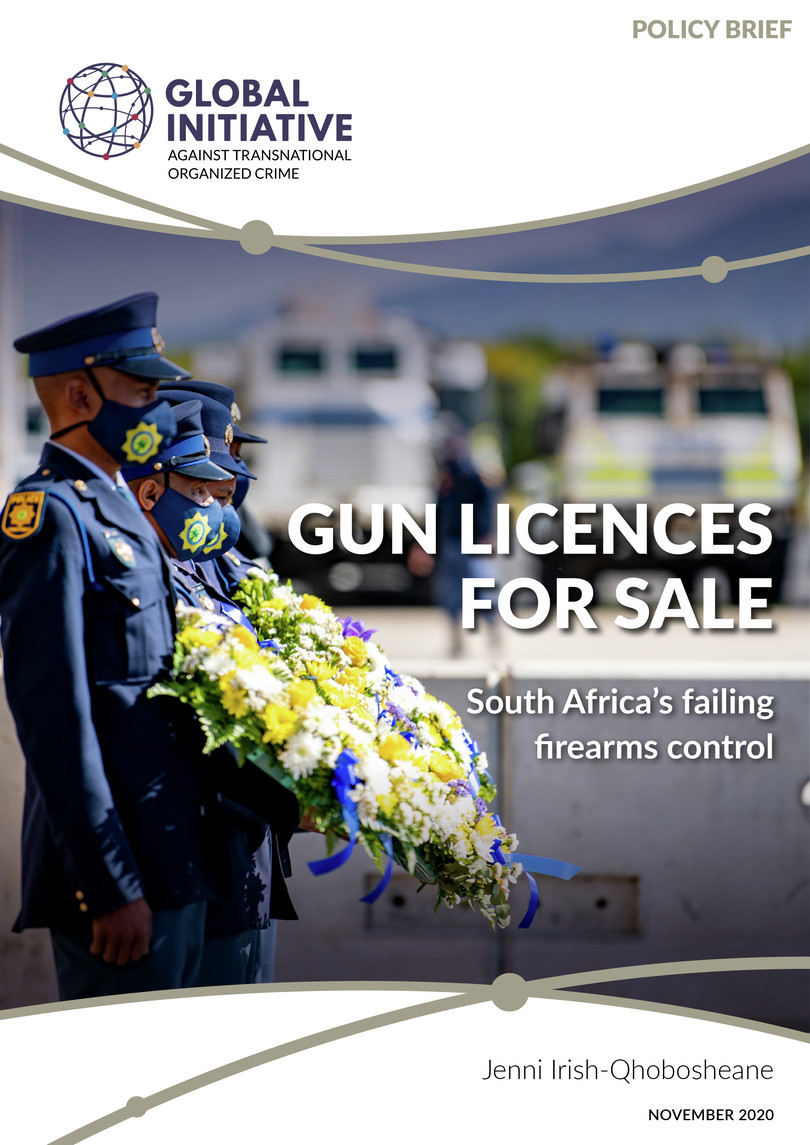Poor implementation of firearms legislation and corruption in South Africa’s firearms registry has put guns in the hands of gangsters.
‘Our success or failure in fighting crime is, to a large extent, dependent on how effectively managed [the Central Firearms Registry (CFR)] is. … Its effectiveness cannot be compromised.’1 These were the words of then South African Minister of Police Nathi Mthethwa, speaking to the media in November 2010 about the management of its CFR, the entity responsible for controlling civilian access to firearms.
Mthethwa went on to say that the ‘current state of affairs at the CFR is far from what and how it is supposed to be … If we are serious about reducing crime, instead of serving as an additional arsenal to our mission, suffice to say the CFR currently acts as a bottleneck in our crime-fighting initiatives.’2
Mthethwa’s statements emphasized how important controlling civilian access to firearms was to curbing criminal violence in South Africa. But they brought about little change in the management of the CFR, and his grim assessment of the state of the registry still rings true 10 years later.
In September 2020, Lieutenant Colonel Charl Kinnear – the Anti-Gang Unit section head in the South African police force – was investigating a gun licensing scandal involving senior police officers and underworld figures when he was assassinated outside his home. His shocking death, and the possible link to the ongoing investigations into firearms corruption, has brought the implementation of South Africa’s Firearms Control Act once more into the spotlight.3
The syndicate Kinnear was investigating was not an isolated phenomenon. Chaotic administration and endemic corruption has bedevilled the CFR since its inception, giving rise to a situation whereby gangsters and corrupt officers can manipulate flaws in monitoring systems to grant firearm licences unlawfully.

South African police officers outside court during the hearing of Zane Killian, charged with the murder of Lieutenant Colonel Charl Kinnear, the Anti-Gang Unit section head in the South African police force. At the time of his assassination, Kinnear was involved in investigating a large guns-to-gangs syndicate that involved key underworld figures.
Photo: Gallo Images

A gun confiscated from a 24-year-old allegedly affiliated with a Cape Town gang. The South African authorities have admitted that the firearms-control regime is plagued with problems.
Photo: Bishop Lavis police station via Facebook
How the Central Firearms Registry has been left open to manipulation
Accurate record keeping is a cornerstone of effective firearms control. For it to be effective, it is necessary to keep records that enable the tracking of guns throughout their life cycle.
The CFR is the entity tasked with record keeping and control of civilian access to firearms under the Firearms Control Act, passed by the South African Parliament in 2000 and put into operation in 2004. At the level of individual police stations, a designated firearms officer is appointed to carry out local-level functions of the CFR. However, the ways in which the Firearms Control Act has been implemented have left the CFR open to manipulation.
One of the key objectives of the Firearms Control Act was to establish a database at the CFR that would provide an accurate and comprehensive picture of firearm ownership and when licences are due for renewal. To do this, the South African Police Service (SAPS) developed what became referred to as the digital Enhanced Firearms Register System. In September 2004, SAPS signed a contract with ICT company Waymark to develop and implement the system. However, as the cost of the contract skyrocketed (from R93 million to an eventual contract fee of R412 million, US$6.2 million and US$27.6 million at today’s rates) and years passed with the system not being fully implemented, the contract was eventually cancelled and police launched an internal investigation.
The chaos surrounding the Waymark contract and associated IT systems has resulted in police still having to rely on manual systems to issue firearm licences. This makes it virtually impossible for the data that is eventually digitally stored in the database to be accurate and up-to-date on all licensed firearms issued. Flaws in the system also expose the CFR to manipulation of information captured on the system by officials. Investigations have found that firearm licences could be manipulated on the database, and licences could even be issued for firearms that had been part of stock destined for destruction or for fully automatic firearms (licences for which are limited by law for specific use).4
The system for firearms dealers to digitally submit information on their stock is likewise not operational. Because this has to be done manually, and because firearms dealers cannot view what the CFR has listed as their stock, some dealers are concerned that corrupt SAPS officials could add additional firearms without the dealer’s knowledge in order to license illicitly acquired weapons.5
A Johannesburg lawyer who represents gun dealers told the GI-TOC that, in their view, there are few, if any, gun dealerships in the country whose records match those held by the CFR.6 These inconsistencies not only provide an opportunity for corrupt police officers to manipulate forms and fraudulently license firearms, but they could also be used by unscrupulous dealers to sell firearms without following proper licensing protocols.
Guns for gangsters: corruption in acquiring firearm licenses
Before his assassination, Charl Kinnear was involved in investigating a large guns-to-gangs syndicate that involved prominent Western Cape Underworld figures including Nafiz Modack. Modack has been implicated in extortion rackets in Cape Town and now faces charges including contravening the Firearms Control Act.7 It was alleged that underworld figures (including Modack) and their family members and friends had obtained firearm licences unlawfully. 28 people have been arrested as part of this investigation, 15 of whom were serving members of the police. Police officers at a number of Gauteng police stations as well as officials from the CFR were among the police officers arrested.8
This syndicate is by no means the first case involving ‘guns to gangsters’ or highlighting corruption within the CFR. Over the last decade, there have been numerous allegations, reports and cases of corruption involving CFR officials and their counterparts at the local police station level.
In 2013, 18 CFR officials, including the then head of the registry, Brigadier Mathapelo Miriam Mangwani, were suspended following alleged involvement in fraudulent issuing of firearm licences. Mangwani was later found guilty in an internal disciplinary hearing, having received monthly payments from a firearms dealership.9
In 2014, detectives investigating the activities of gang leaders in the Western Cape began to suspect that certain gang bosses were able to acquire firearm licences through fraudulent channels.10 Their investigations into alleged gang leader Ralph Stanfield revealed that Stanfield had five firearm licences, all of which had been issued within just three days of the application being made. Stanfield had then used these licences to purchase a large amount of ammunition.11

Ralph Stanfield, an alleged gang leader, and his wife. Investigations implicated Stanfield in having acquired several firearm licences without following regular procedures.
Photo: Gallo Images
Three police officers in the employ of the CFR in Pretoria – Priscilla Mangyani, Billy April and Mary Cartwright – were arrested as part of this investigation. The three are alleged to have been involved in a syndicate that worked with others at the CFR to issue gun licences based on fraudulent applications.
At the time of these arrests, a senior police officer involved in the investigation said that the police had analyzed hundreds of gun licences and identified several individuals and companies who had apparently benefited from the syndicate by receiving firearms licences fraudulently.12
The state provisionally withdrew charges against the three police officers, as well as charges against Stanfield, his sister and then girlfriend Nicole Johnson in October 2016, but subsequently reinstated them in April 2018. Seventeen others were also charged with being part of the same syndicate. These 23 individuals now face, collectively, 109 charges, including fraud, racketeering and unlawful possession of firearms. In 2015, the same group of Western Cape police detectives arrested Gauteng-based police colonel Christiaan Prinsloo, due to his involvement in facilitating the supply of guns stolen from police armouries and stores to gang bosses and leaders in the Western Cape. Prinsloo pleaded guilty to 11 charges of racketeering, corruption and money laundering.13
While the media coverage of the Prinsloo case naturally focused on the diversion of guns from police armouries to gangsters, the investigation into his activities also revealed that Prinsloo had used his position in the police service to secure firearm licences for people who should never have been allowed to possess weapons. These licences were issued to gangsters and other criminal groups as well as to security companies, some of whom were allegedly linked to or were working for criminal networks.14
A senior police officer explained how this worked: ‘Applications would flow through identified local police stations and then run through the CFR. The local station would be the lowest level in rung, and often people at the CFR would tell the person wanting the licence which station to send their application through.’15
Similar patterns were also seen in other cases, whereby gangsters wishing to obtain firearm licences would travel to a police station identified where a corrupt CFR officer would be able to handle applications, rather than (as required in law) at their local station.
It is a stark irony that the key objective of the Firearms Control Act – to control firearm proliferation – has not only been undermined by more than a decade of poor implementation and corruption at the local police station level and the CFR, but has also enabled dangerous criminal elements to acquire firearms and ammunition.

This article draws from research contained in a new policy brief recently published by the GI-TOC’s Observatory of Illicit Economies in Eastern and Southern Africa, titled ‘Gun Licenses for Sale: South Africa’s failing firearms control’, by Jenni Irish-Qhobosheane. The paper examines how the entity responsible for controlling civilian access to firearms became so embroiled in corruption that criminal syndicates have been able to infiltrate the registry and acquire firearm licences. Available at: https://globalinitiative.net/analysis/south-africas-firearms-control/.
Notes
-
Remarks by Minister of Police, E.N. Mthethwa, MP to the National Press Club, on the current challenges affecting the SAPS firearms application and licensing processes, Pretoria, 2 November 2010. ↩
-
Ibid. ↩
-
Philani Nombembe, Gangs gun bonanza, Sunday Times, 27 September 2020, https://www.timeslive.co.za/sun-day-times/news/2020-09-27-top-cop-charl-kinnear-was-close-to-cracking-guns-to-gangs-syndicate-before-murder/. ↩
-
These irregularities came out in investigations into the activities of Christiaan Prinsloo, who pled guilty to charges relating to his involvement in facilitating the supply of guns stolen from police armouries and stores to gang bosses and leaders in the Western Cape. ↩
-
Interview with Andrew Sauter, Johannesburg, 26 April 2018. ↩
-
Interview with Martin Hood, Johannesburg, 4 May 2018. ↩
-
Marianne Thamm, Orange is the new blue: Finally, a reckoning for corrupt cops, Daily Maverick, 12 December 2020 https://www.dailymaverick.co.za/article/2020-12-12-orange-is-the-new-blue-finally-a-reckoning-for-corrupt-cops/. ↩
-
Jenni Evans and Riaan Grobler, Nafiz Modack, cop and one other accused granted bail in massive gun licence fraud case, News24, 17 June 2020, https://www.news24.com/news24/southafrica/news/nafiz-modack-cop-and-one-other-accused-granted-bail-in-massive-gun-licence-fraud-case-20200617. ↩
-
Angelique Serrao, Top cop axed over gun saga, IOL, 7 April 2014, https://www.iol.co.za/news/top-cop-axed-over-gun-saga-1672115. ↩
-
Interview with senior police officer, Cape Town, 16 August 2018. ↩
-
A licensed firearm holder is allowed to purchase up to 200 rounds of ammunition from a firearm dealer and if, as was the case with Stanfield, the person has more than one licence they are able to purchase 200 rounds for each additional firearm. ↩
-
Caryn Dolley, Police ‘gave guns to gangs’, Weekend Argus, 28 September 2014, https://www.iol.co.za/news/police-gave-guns-to-gangs-1756940. ↩
-
More details about this case will be revealed in a forthcoming book by Mark Shaw, Give Us More Guns, expected March 2021. ↩
-
Interview with senior police officer involved in the Prinsloo investigation, Cape Town, 16 August 2018. ↩
-
Interview with senior police officer, Cape Town, 19 April 2018. ↩
